In this post you will understand what is a sockliner in a shoe, why use sockliner in footwear, what types of sockliner exist, what materials you can use to make a sockliner, and most importantly how to make a sockliner for your shoes by yourself.
I prepare for you 3 shoemaking tutorials where you will learn 3 different ways to make sockliner. It doesn’t matter if you have experience in shoemaking or not, if you want to make shoes for yourself or just want to make a new sockliner for your existing shoes to replace the old one, here you will find everything you need.
Let’s start the beginning and move on step by step.
What is sockliner in a shoe?
Sockliner is an inner part of the footwear that covers the insole (footbed) of the footwear. You touch this part with your foot during wearing shoes.
There are many different footwear types and designs and if you want to learn how to design any footwear type and how to create the pattern of this footwear design, check my ''Footwear design course".
The main purpose of this inner footwear part is to create extra comfort of shoes, to warm your shoes in cold weather and to absorb the moisture of your foot during wearing the shoes.
The sockliner can be removable or attached to the insole inside of the footwear.
In general, when we talk about sockliner, keep in mind the importance of the insole (the footbed) as well because in most of the cases the insole is the part that plays the most significant role in the comfort of your shoes especially in sport and hiking shoes.
In this post “Steel shanks in the insole construction’’ you can learn more about shoe insoles.
There are different types of the sockliner depending on the footwear type and material they are made from.
How to make Sockliner
Before we talk about deferent types of sockliners, I want to share with simple but 100% needed tutorial how you can always make the perfect sockliner. And if you will like it, make sure to check my post "How to Make Shoes: The Definitive Guide" to learn more about other steps of making shoes.
I know you (as always) prefer to see it once then read about it 1000 times, so at the beginning of this article you can find a step by step shoemaking tutorial on "How to Make Sockliner''
Types of sockliner in a shoe
There could be different types of sockliner, first of all depending on the shoe type,category it belongs to, and the second level of sockliner that you can create depends on the design of your shoes.
[Later in the post we will talk more detailed about different sockliner designs you can create-Endless Possible Designs Of The Sockliners.]
Sockliner shoe category
To make it easier to understand we will divide shoes for main 3 categories:
sport shoes
Here we place all kinds of sport shoes that are created especially for each athletic activity, like running, football etc
Photo by Tom Sodoge on Unsplash
hiking shoes
Photo by Joanna Nix on Unsplash
comfort shoes
Photo by Jason Briscoe on Unsplash
Now, depending on the shoe category the specific shoe type belongs to there are different materials that can be used in the creation of the sockliner.
Each material has its own benefits that must suit to the certain shoe category.
For example, Nike sockliner made from materials like foam and later in the post I will teach you how you can make a new sockliner from foam by yourself.
Materials for sockliners
There are really a wide range of different materials used for sockliner but I want to list here only a few of them, most common and relevant for you.
1. Leather sockliner
There are different types of leather used in shoemaking for sockliner:
- Calfskin
- Sheepskin
- Goatskin
- Pigskin
Most of these leather types used in elegant and dress shoes.
The pigskin uses a lot in comfort shoes because it is one of the most breathable skin.
Later in this post I will teach how you can make simple leather sockliner, so continue reading.
2. Wool sockliner
It is clear to you that the wool sockliner will warm the footwear in the cold temprecher.
3. Cork sockliner
There 2 types of cork sockliner:
the simple one (flat) and molded that repeats the foot shape with curves in the instep and arch support.
Cork sockliner uses in different shoe categories like dress shoes and comfort shoes.
In one of the tutorials below you will find how to make a new cork sockliner and replace it in your footwear instead of the old simple sockliner.
4. Different types of foams:
The sockliner foams can be molded or flat.
Molded sockliner has the shape close to the shape of the feet with the instep support.
In most of the sport shoes, hiking shoes and comfort shoes the molded sockliner from different foam types are used the most.
You as a beginner in shoes making or just a person who seeks to have a better sockliner in his existing shoes can use any of these materials that you can source easily and make you own sockliner.
In my "Sneakers making course" we teach how to make sockliner from memorable foam.
3 Ways to create sockliner
I prepared for you 3 different tutorials with step by step explanation on how you can make sockliner.
Choose one for you that suits better for your needs and skills and make your own sockliner.
- How to replace or remove your existing sockliner (easy way)
In this tutorial I show how you can make a new sockliner for your shoes based on the existing sockliner. Here you don’t need to have any special tool like shoe last ect but if you want to learn moreabout all shoemaking tools needed in making shoes, you are welcome to check this post "Beginners in Shoemaking. Tools and Materials:The Definitive Guide" - Basic sockliner construction ( professional way using shoe last)
To make a sockliner in shoemaking there is a professional way working with shoes last.
This is actually how are made all types of sockliners (listed above) no matter from which materials they are made.
(If you are new to this world of shoemaking and don’t know what is a shoe last, you are welcome to read this post “Shoe Last Types & What Is A Shoe Last! [Definitive Guide]” , and this post "What you need to know about shoe last Part 1 : Shoe lasts components" too)
In this tutorial I will teach how to make a simple pattern of the sockliner that you can use in making your shoes. The great thing about this tutorial is that I also teach how to make a pattern of the insole, because pattern construction of the sockliner bases on the insole pattern.
Note: It is a very useful tutorial because based on this basic pattern of the sockliner you can make a variety of designs of the sockliners and later you will see the examples of the sockliners designs. - How to make comfortable sockliner ( easy way)
In this tutorial I teach how to make a simple sockliner with the extra cushion in the arch zone.
[I took this tutorial from one of my courses online “Oxford shoe Course”.]
To make this comfortable sockliner with the arch cushion you will need to use the pattern of the insole. Don’t worry, in the second tutorial I explain how to make this pattern of the insole as one of the steps of basic sockliner construction.
Also, you need to know that there is another shoe making approach to make your footwear with the arch support . You can make leather insoles with this support inserted already in this leather insole.
I teach this approach in my "Bespoke Derby Opanka Course".
How to replace or remove your existing sockliner (easy way)
If you want to replace your existing (old) sockliner, to improve it by adding small cousin, this tutorial is for you.
Basic sockliner construction ( professional way using shoe last)
This tutorial consists of 2 main steps: making the insole pattern and making the sockliner pattern itself.
You need to have this insole pattern because the sockliner pattern must be made from the insole pattern.
Later you can use the insole pattern in making the actual insole from cardboards or from vegetable tanned leather. If you want to know more about insoles types, check this post “Making Shoes For The First Time? Do This!”
So to make a basic sockliner construction take your shoe last, masking tape (learn more best masking tape type in this post "Shoe making Case Study: Cover Your Shoe Last Using Right Masking Tape") and follow these steps:
1. Making the insole pattern
Attach the shoe bottom last with masking tape by placing a few pieces of it along the length of shoe last bottom
The goal here is to cover with masking tape the entire surface of the bottom. I used wide masking tape 5cm width, so I used only 2 straps of the masking tape. If you will use narrower tape you will need to attach a bigger amount of the masking tape pieces.
Spread the wrinkles with side of the utility knife.
Attach second layer of making tape along the width of your shoe last
We need to have these second layer of masking tape to have stable and dance pattern that will not stretch and will not deform during future steps of your work.
Mark the line of the insole by following the bottom edge of the shoe last.
a) Place the pencil lead on the masking tape along the bottom edge
b) In the front part of the shoe last follow the bottom edge and in the back part follow the steel plate of your shoe last (if you have it).
c) If the steel plate doesn’t reach the back heel edge follow the shoe last bottom edge
d) Connect with the smooth line the end of the steel plate and the end of the shoe bottom edge line
Cut this line you just found.
You can cut it with utility knife and here in this post “Simple Knife For Shoemaking Craft” I teach how to keep utility knife always sharp.
You can also cut the front part of the masking tape using the side of the metallic ruler if you can’t keep the knife exactly on the line.
Take the masking tape pattern off the bottom
Attach this pattern first on your cutting board to spread it well and then attach it to the cardboard.
During attaching the masking tape pattern of the insole (yes, it will soon be your insole pattern) don’t pull it and don’t scratch it. Attach it as it lays.
Cut it out
Now you have the pattern of the insole.
2. Making the basic sockliner pattern
Copy the outline of the insole pattern.
Mark 2-3mm inside of the line on the toe part
Place the insole pattern to this point and draw new toe line
Mark two points A, B in the most extended places on the inner side of the insole pattern
Mark point C in the most narrow place of the insole pattern on the inner side . Then in the distance of the 5 mm mark another point.
Place the original pattern of the insole once to the point A and mark the outline until the point C.
Then place the original insole pattern to the point B until point C and mark line
Now, you got a line for the new pattern , the basic pattern of the sockliner
Cut it out
This is your basic pattern of the sockliner
You can use this pattern and make a simple sockliner from leather, for example, or you can add some cousins to this simple sockliner by attaching a cork layer (or some foam).
To do so, use the approach of the cork layer making as I showed in the first tutorial.
How to make comfortable sockliner ( easy way)
How a sockliner can improve the comfort of your footwear?
A sockliner can improve the comfort of your footwear by changing just a little bit the design of your simple, “classic” sockliner that I taught you in previous tutorial.
Because the combination of the shoe pattern making knowledge and the design idea is great power it can change your perception about shoemaking, about the “world” of footwear in general!
This is the main concept of my approach in shoemaking and this is what I teach in my shoemaking courses online.
All small details, part of your footwear may improve the entire look of your shoes or make it worth. It concerns absolutely everything in shoemaking: the parts of the upper and lining, how they connected with each other, the type of seams, the edge of the insole, the insole itself, etc.
I can talk endlessly about every specific detail and shoe part of the footwear, and as a good example of how the shoe designing and shoe pattern making skills can influence on the beauty and comfort of your shoes, I chose to talk with you about sock lining.
But before we will dive into details I want that you will read one of my oldest posts "Shoe Pattern: Basic pattern is important!" where I explain the importance of basic shoe pattern, so you will understand one of the befits of this pattern making knowledge.
Endless Possible Designs Of The Sockliners
Working with one simple pattern of your sockliner, basic construction of the sockliner that you just learned, you can make endless possible shoe designs of the sock lining!
This is a simple pattern of the sockliner we made previously
Now, by changing the pattern of this sockliner to complete the entire design of the footwear, you can improve the entire look of your shoes!
Let’s take few examples.
1.Sockliner from denim and patent leather
In my Fashionable flat ballet shoe course, I teach how to make flat ballet shoes working with different materials: denim and patent leather. If you plan to make shoes from denim or any other type of fabric you should know how to adapt your pattern for the specific qualities of the fabric.
So, as the sockliner, must be a part of the entire shoe design (and if you want to learn more about different shoe parts, read this article:"Shoe Parts"), I made a design of the sockliner that combines the same materials that the upper consists of denim and patent leather.
What is super important in this example of the shoe sockliner design is a smart combination of the denim and patent leather, meaning that you should take in your account the specific qualities of the materials you work with and the comfort.
Because of the varnished surface of the patent leather, it is better to use the patent leather in the shoe design of the sockliner only in the places where your feet will not touch it.
So, that’s why the possible shoe design of the sockliner to fit the entire designing of this flat ballet shoes from denim and patent is this one, where the patent element is around the edge of the sock lining and the denim element is in the middle.
-The denim surface will create a comfortable, soft feeling to the leather of your feet that will absorb the sweat as well.
-The surrounding strap of the patent emphasizes the presence of the sockliner and complete the entire design of the footwear.
2. The Shoe Sockliner With A Thin Lace

In this shoe design of the sockliner, I beat the heel design element.
The fact is that in the High heels pump shoe course I teach how to build leather stacked high heels working with two types of leather: the green one and vegetable tanned leather.
As a result of this heel design, the heels have small green inlays that brake visually the big, thick high heel and visually reduce the dimension of it.

So this shoe sockliner design improves the entire design of the simple classic high heel pumps. The tiny green lace refreshes the pumps and emphasizes the importance of the green inlays of the heels!
Only from these two examples, you can understand, I think, that shoe pattern making knowledge plus design ideas can allow you to create whatever you want. In my full one-year shoemaking program I teach different shoe pattern making techniques, shoemaking techniques that give to all my students real freedom in their creation.
Now, we are getting close to the main theme of this blog post on how a shoe sock lining can improve the comfort of your footwear.
3. Comfortable shoe sockliner
Two previous examples showed you how shoe sockliner can improve, complete the design of your footwear, but at the same time, the sockliner can make your footwear more comfortable.
I think that this is one of the most important qualities you want your shoes will have!
So, in this shoemaking post, I decided not only to demonstrate you your possible power in shoemaking but to give you a very useful and actionable tutorial on how you can improve the comfort of your footwear by making a comfortable shoe sockliner easy and fast.
I created for you this third shoe making tutorial with full step by step explanation and with a downloadable guide that I took from my online Oxford shoe course.
I tried to make it simple as always I do, to teach you shoemaking in a most efficient way.
Remember, here you will need to make at first the pattern of the insole exactly as I taught you in the previous tutorial about basic construction of the sockliner.
Watch, download and leave a comment, if you want more tutorials like this one!

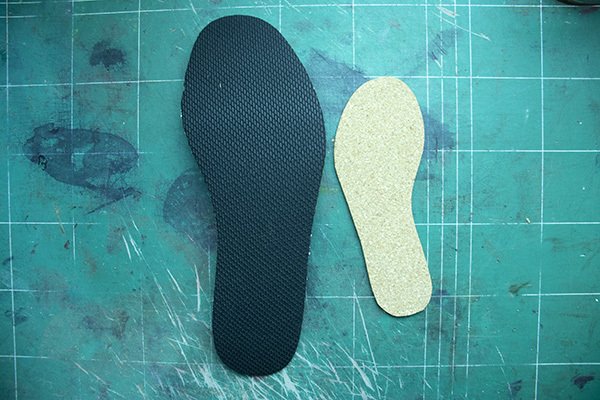
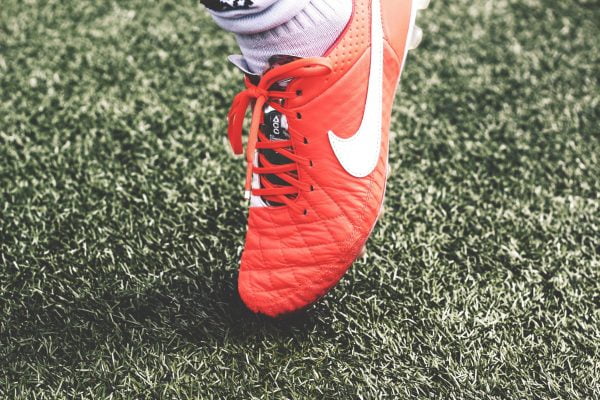


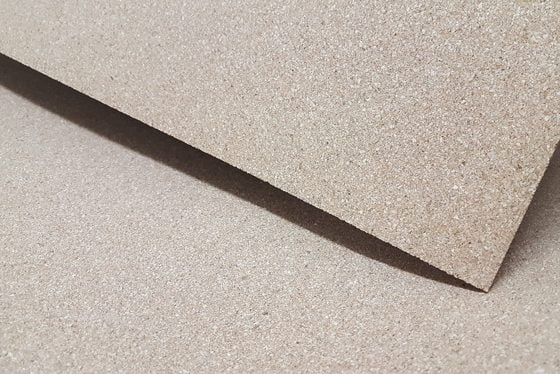




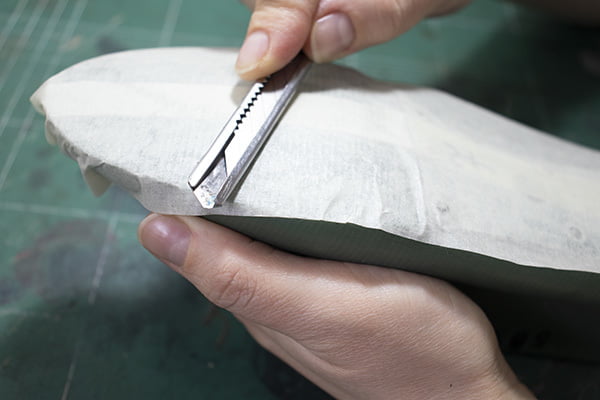











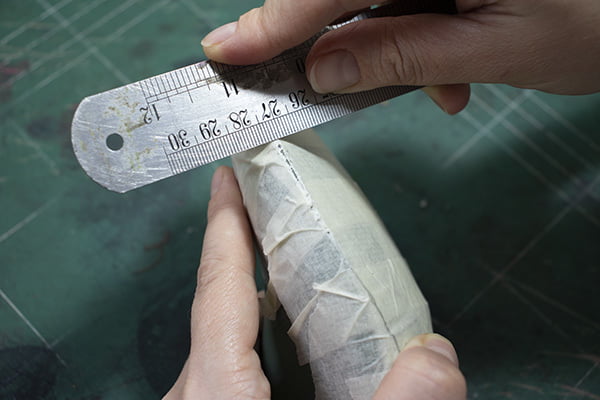
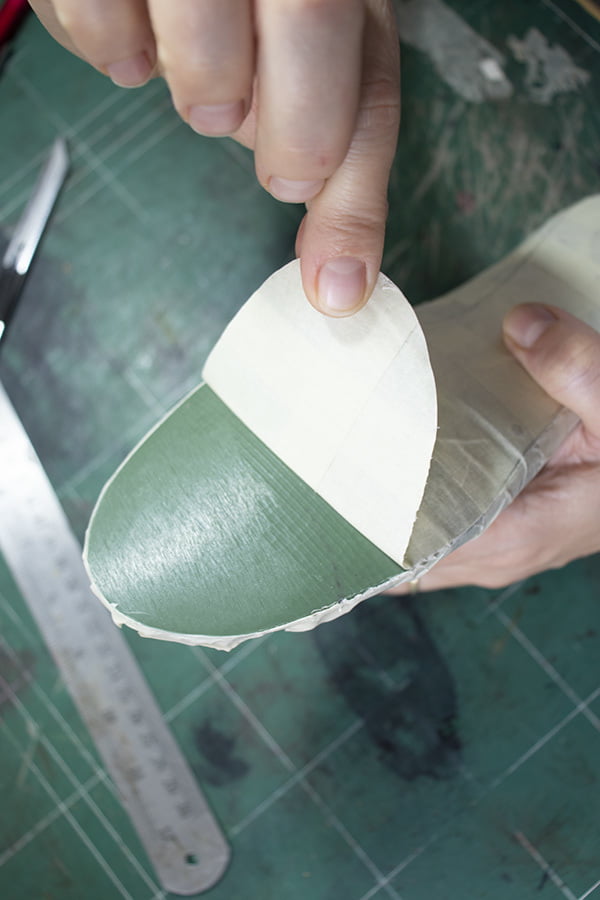

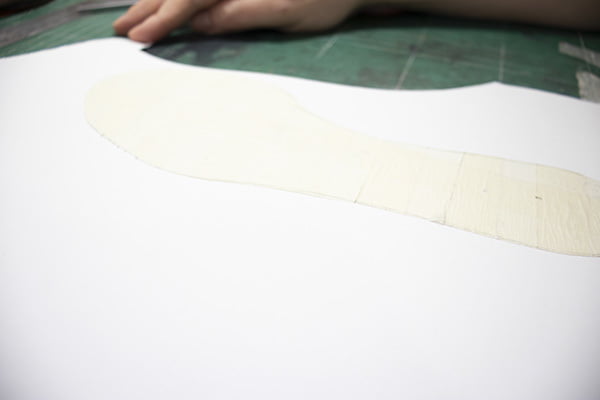










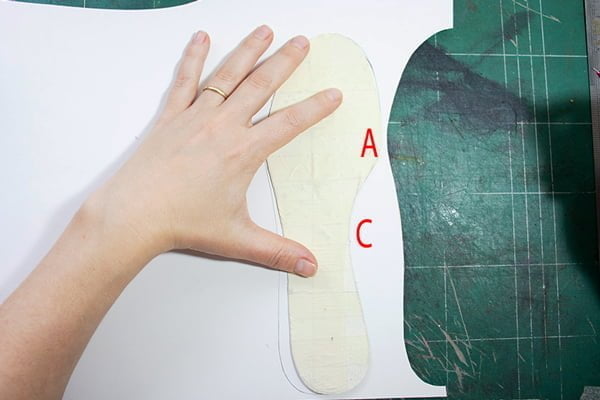




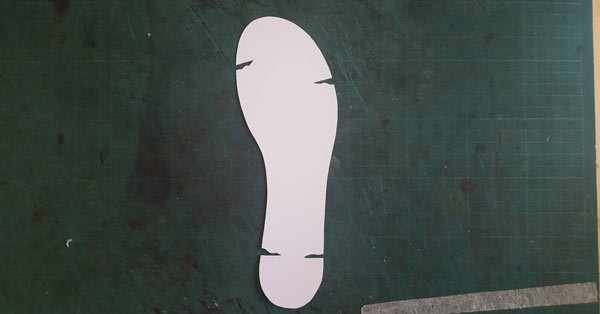


Thanks again Sveta – very useful. I need to have cushioned insoles for all my shoes (I am not very young and the soles of my feet hurt if I am on them all day). What do you suggest I use for the MOST cushioned insoles possible? I love the feeling of ‘walking on soft grass’ which high quality after-market insoles give. How can I incorporate this ‘soft springiness’ into my shoe design? Many many thanks for your tutorials – keep them coming, please!